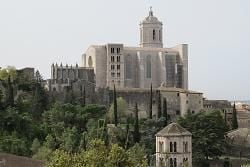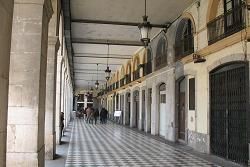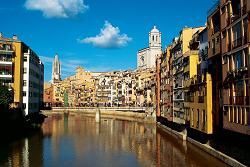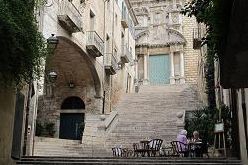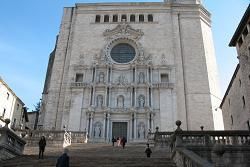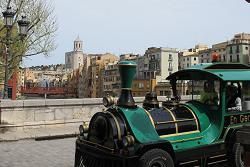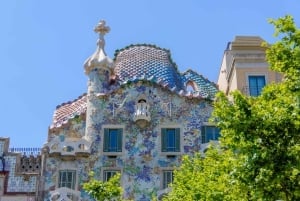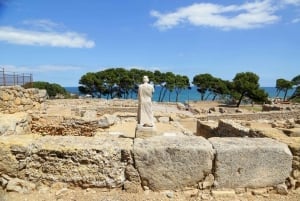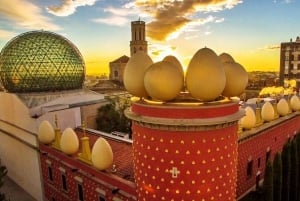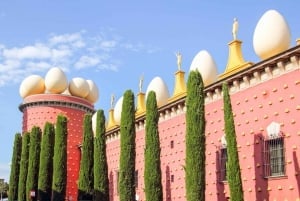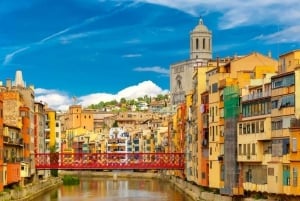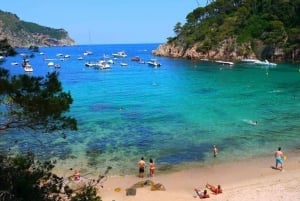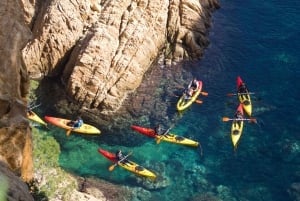Girona
Gerunda was the name that the Romans gave to Girona when they founded the capital city of the Gironès on the region. Proof of this era can be found in the steps in the old city and Força Street, both of which date back to this period. The city wall was built for the purpose of protecting the city and some centuries later was to form part of this area. Curious features of the city wall are the windows, shops or arches built into it.
The Middle Ages were glorious years in Girona and nowadays most traces of the rich Jewish history can be observed by just wandering through the old city, located in the heart of Girona.
The "call jueu" or Jewish quarter, is a crossroads of narrow streets and many symbols remain from this era. In fact it is one of the best preserved sites from the Middle Ages in Europe and it was here that the Jewish community lived until the end of the XV century.
Well worth a visit is the very interesting Jewish centre, Centre Bonastruc Ça Porta which used to be the old synagogue. Just behind this is Montjuïc, or "Jewish mountain" offering fantastic panoramic views over the city.
Although Girona is a large, bustling and modern city, it doesn’t tend to get crowded. The old part of the city gives you the feeling of being in a small town.
The facade of the cathedral of Santa Maria de Girona is considered to be one of the most beautiful examples of Catalan baroque and has been built in different architectural styles. It took several centuries to be finished (XI-XVIII) and was used as a mosque during the Arab occupation. Having said that, it is mostly considered as an excellent example of Gothic architecture. Eighty-six steps approach the main entrance and from there the view of the city, as well as the outskirts of Girona, make it well worth the climb.
Several renaissance-style houses can be found grouped around the cathedral square, such as the Palace of Justice, as well as other buildings like the Casa de l’Ardiaca and the Episcopal Palace, both of which pay witness to the past importance of the city.
The colourful houses lining the river Oñar are probably the most well-known feature of Girona. How to connect the two parts of the city has always posed problem in Girona and this is why bridges are of such importance in the city. Unfortunately, all bridges are of modern construction, but the views change from one to the other. The stone bridge or "Pont de Pedra" was built in 1849 and replaced the original medieval one. The steel bridge or "Pont de Ferro" was built in 1876 in honour of Gustave Eiffel.
Also in the old town or "Barri Vell" we recommend taking a walk along the Passeig Arqueològic, where you will see the Julia and Cornelia Towers located on the city wall. At the end of this walk are the Arab baths or "Banys Àrabs".
Top attractions in Girona:
- "Call Jueu" or Jewish quarter
- The Cathedral
- Arab Baths
- Rambla de la Llibertat
- Plaça de la Independència
- Views from the bridges
- Sant Pere de Galligants church; housing the Archaeological Museum
- Sant Felix church
- A walk along the city wall
Special dates to consider when visiting Girona:
- "Flower Time Girona". It fills the streets, squares and private patios with flowers and plants; May 7 to 15
- "Festa Major" Sant Narcís; October 29
Local market; every Tuesday and Saturday
And more information in .... Girona


